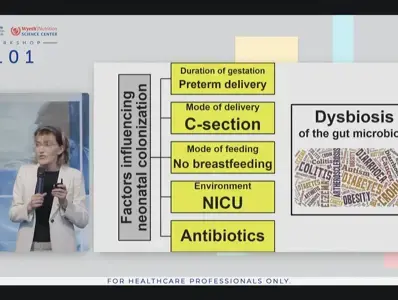Overview of early-life gut microbiome modulation strategies
A healthy human fetus is sterile, and contamination that occurs during vaginal delivery, clinical procedures, and l aboratory analysis, shapes the initial microbiota of newborns. With the gut microbiota relating to many bodily systems, and with alterations in the factors that influence its colonization causing dysbiosis and disease, these first interactions are crucial. In this lecture, Prof. Hania Szajewska highlights possible strategies to modulate the gut microbiota. This begins with the first layer of intervention such as supporting breastfeeding, avoiding interactions that disrupt the microbiome, and minimizing unnecessary C-sections and usage of antibiotics. Another means of microbiota modulation is through diet, emphasizing the importance of breastfeeding and its HMO content, which influences the development of this microbiota, as well as the first foods introduced to the infant. Directed strategies such as vaginal or fecal microbiota transplantation to restore the microbiota of infants who had undergone C-sections, as well as supplementation with “biotics” , pre-, pro-, syn- and postbiotics were also a point of discussion during the lecture.
If you liked this post you may also like

